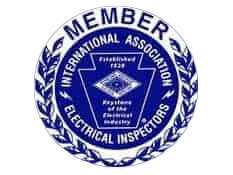Long Island's Premier electrical Contractor
At Popkin Electric, we are more than just your neighborhood electrical service; we are the benchmark for excellence in both commercial and residential electrical solutions across Nassau County. Specializing in everything from intricate repairs to groundbreaking new construction projects, we offer numerous services to meet all your electrical needs. Experience the difference with Popkin Electric—where quality, expertise, and reliability unite.

On Time Guarantee
We'll arrive within 15 minutes or less of your scheduled appointment, or we'll call.

- Quality Control System
- 100% Satisfaction Guarantee
- Commitment to Customers
- Highly Professional
ABOUT US
Long Island's Top-Rated Electrical Contractor
Since 1967, Popkin Electric has been the electrical contractor of choice for residents and businesses in Nassau County. Our reputation is built on a foundation of integrity, professionalism, and expertise in electrical services.
We’ve dedicated two generations to serving the diverse electrical needs of Long Island’s communities. From residential electrical repairs to commercial installations and industrial projects, we offer a full range of high-quality services. Over the years, we’ve created lasting relationships with many of Long Island’s leading firms and contractors, ensuring that our clients consistently receive outstanding service.
When you need a Long Island electrical contractor, call Popkin Electric.
our great reviews
Affiliations and Insurance
Fully Licensed And Insured For Your Protection.
In addition to being licensed and insured, All our employees are drug tested and undergo a background check.



Join The Popkin Family
When you choose Popkin Electric, you’re not just hiring an electrical contractor – you’re becoming a part of our family. With a rich history of serving Long Island’s electrical needs, we look forward to continuing our legacy of excellence and innovation for years to come. Let us show you the Popkin difference in every project we undertake.
Learn more about our services, our team, and our unwavering commitment to excellence by exploring our website or contacting us directly. Thank you for considering Popkin Electric for your electrical needs.

Our Services
Home Improvement Contractors
We provide complete electrical contracting services at competitive prices, proper licensing, fast inspections and even planning assistance.
Homeowners
Our technicians have years of experience working in homes like yours. From adding outlets or switches to service upgrades for new or older homes, we can handle anything you need.
Commercial And Industrial
We provide clients the latest in technology and wiring to help you manage the increase in requirements for today and tomorrow.
WHO WE ARE
We specialize in all types of electrical repairs for your home or business.
We take care of day-to-day projects and very large expansions. Since our inception, we have completed thousands of electrical installations for our customers.
- 250+ Satisfied Customers
- Over 55 Years of Experience
- 1,000+ Successful Projects
OUR GUARANTEES
Why Choose Popkin Electric?
Popkin Electric has established itself as the premier electrical contractor on Long Island. With over 50 years of experience in the industry, we have the expertise, skills, and knowledge to handle any electrical job, big or small.
Experienced Technicians
Our team of experienced and skilled electricians is dedicated to providing top-notch services and exceptional customer service. We use the latest technology and techniques to ensure that all of our work is of the highest quality and meets industry standards.
Competitive Pricing
At Popkin Electric, we understand the importance of reliability and affordability when it comes to electrical services. That’s why we offer competitive pricing, 24/7 emergency service, and a 100% satisfaction guarantee.
Customer Commitment
Our commitment to our customers is unparalleled. We believe in building long-term relationships with our clients, which is why we offer planning assistance, proper licensing, and fast inspections to ensure that your project runs smoothly from start to finish.
GET IN TOUCH
Need A Reliable Electrical Contractor To Fix Your Home Or Office?
When you choose Popkin Electric as your Long Island electrical contractor, you can rest assured that you are in good hands. Contact us today to schedule your next electrical project or repair.





